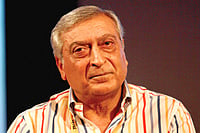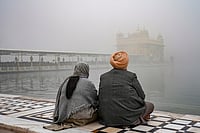Both in tone and substance, Prime Minister Modi’s US visit has gone off better than expected. The atmospherics have been good, with protocol exceeding gestures such as Melania Trump joining the President to receive him at the White House adding to the warmth of the welcome. Trump set aside considerable time to engage with Modi, with a reception and dinner at the White House, apart from a one-on-one meeting and delegation level talks. This was important, as it gave an opportunity to the two leaders to size each other up better and strike a personal rapport—a major objective for India. Disregarding the composition of the Indian delegation, the US side fielded an exceptionally high-level team for the talks with Vice-President Pence, Secretary of State Tillerson and Defence Secretary Mattis (even though these two had met Modi separately), Commerce Secretary Ross and Treasury Secretary Mnuchin present. This indicated that the US side wanted full-scale talks. It will be useful for the future that all key decision makers in the new US administration have had full exposure to exchanges on various issues.
Just before Modi’s arrival, the US designated Hizb chief Syed Salahuddin as a ‘specially designated global terrorist’. This step was clearly under discussion, but the timing of the announcement highlighted this political gesture to India on the terrorism issue and conveyed a discomfiting signal to Pakistan. The Hizb-ul-Mujahideen (HuM) claims to be a Kashmiri resistance movement, as distinct from Pakistani jehadi organisations operating against India. By designating its chief as a terrorist, the US has eroded the political legitimacy of HuM and Pakistan will henceforth be seen as sheltering another international terrorist. Pakistan has come under similar pressure before, as the LeT, JeM, the JuD and its chief Hafeez Saeed have all been designated as terrorist outfits or individuals by the US and the UN, but it is inured to it and continues to support them. Salahuddin’s designation may not materially change Pakistan’s rogue conduct, but it delegitimises nonetheless the Kashmiri cause and marks a shift in US position on Kashmiri resistance to India’s sovereignty over J&K.
Beyond this success, the joint statement issued has several positive elements. On terrorism, we could not have been confident of retaining earlier formulations, much less improving upon them, given stray signals from the Trump team about resolving India-Pakistan differences and signs of business as usual with Pakistan. This time, the treatment of Pakistan is more blunt, with the two sides calling on it “to ensure that its territory is not used to launch terrorist attacks on other countries” and summoning it “to expeditiously bring to justice the perpetrators of the 26/11 Mumbai, Pathankot, and other cross-border terrorist attacks perpetrated by Pakistan-based groups”. The intention to increase operational level counter-terrorism cooperation has been clearly stated.
Similarly, on the South China Sea, formulations that reflected shared concerns in the past might have seemed unlikely, given the evolution of Trump’s position on China—from threats to acclamation. In the event, the joint statement reiterates “the importance of respecting freedom of navigation, overflight, and commerce throughout the (Indo-Pacific) region” and calls “upon all nations to resolve territorial and maritime disputes peacefully and in accordance with international law”. This time, however, UNCLOS is not mentioned, nor is there a reference to the India-US Joint Strategic Vision for Asia-Pacific and Indian Ocean Regions, though the joint statement mentions that Trump and Modi agreed that “as responsible stewards in the Indo-Pacific region a close partnership between the United States and India is central to peace and stability in the region”. Significantly though, and this is commendable, we managed to have the US endorse our strategic opposition to China’s Belt and Road Initiative (BRI) by the two leaders, affirming support for “bolstering regional economic connectivity through the transparent development of infrastructure and the use of responsible debt financing practices, while ensuring respect for sovereignty and territorial integrity, the rule of law, and the environment”. A sensitive China would have no doubt taken note of the obvious reference to its conduct in the South China Sea and the BRI in the joint statement.
Importantly, Trump has given his backing to the conceptual and practical aspects of India-US defence cooperation by agreeing to build on the US recognition of India as a ‘major defence partner’ and readiness to work “together on advanced defence equipment and technology at a level commensurate with that of the closest allies and partners of the United States”. The offer to sell Sea Guardian Unmanned Aerial Systems to India has been mentioned. Surprisingly though, no reference to the previous administration’s Defence Trade and Technology Initiative has been made. The determination to expand India-US engagements on shared maritime objectives and explore new exercises beyond the MALABAR exercise has been expressed, with Trump in his press statement specifically mentioning Japan as a partner, which has a China-related nuance. The US has expressed strong support for India’s NSG membership—still blocked by China and relegated to November for further examination—and India’s permanent membership of a reformed Security Council. The formulation on Afghanistan in the joint statement is brief and lacks content, with no mention of the Taliban, an Afghan-led reconciliation process or the deteriorating situation there.
The most difficult issues for India during the Modi visit were trade related. In the joint press conference Trump called for a fair and reciprocal trade relationship and removal of barriers to US goods export to India for reducing the trade deficit. The joint statement commits the two countries to a comprehensive review of trade relations and inter alia “increasing market access in areas such as agriculture, information technology, and manufactured goods and services”. There is no reference to the HIB visa issue, the concerns of the Indian IT sector or the target of $500 billion in bilateral trade set during the Obama presidency. Modi met leaders of the US IT giants prior to his official talks and no doubt discussed our IT concerns within win-win mechanisms. In his press statement, Modi flagged the issue in a forward looking manner by speaking of further strengthening “our successful digital partnership”. Taking a leaf from Chancellor Merkel’s book, Modi invited Ivanka Trump to lead a US delegation this autumn to the Global Entrepreneurship Summit in India. This was an imaginative move to get a foot into Trump’s inner family circle, which is influential in policy-making.
On energy related issues, the absence of any reference to climate change and the Paris Agreement was to be expected. Instead, “a rational approach that balances environment and climate policy, global economic development, and energy security needs” is advocated. In his press statement, Trump announced the US intention to export American energy to India, including long-term contracts under negotiation to supply American natural gas—the US wants a higher price, he said. Curiously, Modi and Trump look forward to the conclusion of contractual agreements between Westinghouse and NPCIL for six nuclear reactors when Toshiba, which owns Westinghouse, has filed for bankruptcy.
All in all, we have weathered for the time being the unpredictable Trump storm, but we have to keep steering the course ahead with a steady hand on the till.
(The author is a former foreign secretary)
























